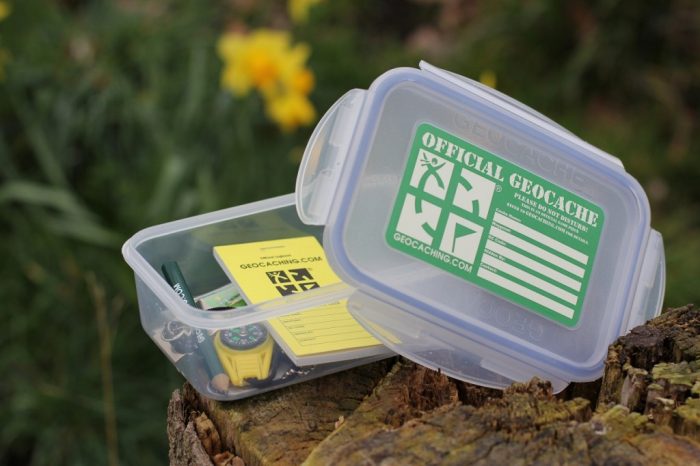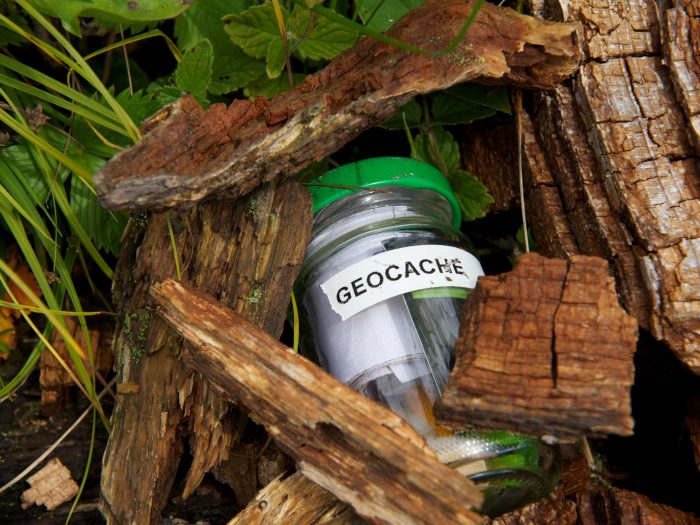Geocaching
June 12, 2020Do you have a sense of adventure and love exploring new places? Little did you know that Marion County is home to a hidden world: GEOCACHING! Whether you are 5 or 95 geocaching is a great outdoor activity for the whole family to enjoy!
WHAT IS GEOCACHING?
Geocaching is a real-world, outdoor treasure hunting game using GPS-enabled devices. Participants navigate to a specific set of GPS coordinates and then attempt to find the geocache (container) hidden at that location. Geocaching promotes getting outdoors and exploring your surroundings. You never know what you might discover, right here in your own town! Geocaches can be easy or difficult to find, depending on their size. Geocache containers can be hidden anywhere, so you may have to look high and low. Once you find a geocache, you can sign the logbook to prove you were there and trade with one of the small items inside. Learn More.
HOW DO YOU GET STARTED?
All you need to get started in a sense of adventure and a cellular device with GPS technology. First, download the official Geocaching app from the app or google play store. Alternatively, you can visit www.geocaching.com to sign up for an account. The best part, IT’S FREE! Chose a player name and open the map to start exploring the geocaches nearest you. Grab your friends and/or family, and set out on the great stretch that is Marion County! Make it an inexpensive part of your vacation here, or just go to find places you never knew existed! Geocaching is a great way to get to know the area and to have fun in an unfamiliar place. It’s also the perfect, quick road trip break! There are geocaches all over Marion County!
WHAT ARE THE RULES IN GEOCACHING?
Geocaching is a relatively new phenomenon. Therefore, the rules are very simple:
- Take something from the cache
- Leave something in the cache
- Write about it in the logbook
WHAT’S USUALLY IN A CACHE?
A cache can come in many forms but the first item should always be the logbook. In its simplest form a cache can be just a logbook and nothing else. The logbook contains information from the founder of the cache and notes from the cache’s visitors. The logbook can contain much valuable, rewarding, and entertaining information. A logbook might contain information about nearby attractions, coordinates to other unpublished caches, and even jokes written by visitors. If you get some information from a logbook you should give some back. At the very least you can leave the date and time you visited the cache.
Larger caches may consist of a waterproof plastic bucket placed tastefully within the local terrain. The bucket will contain the logbook and any number of more or less valuable items. These items turn the cache into a true treasure hunt. You never know what the founder or other visitors of the cache may have left there for you to enjoy. Remember, if you take something, its only fair for you to leave something in return. Items in a bucket cache could be: Maps, books, software, hardware, CD’s, videos, pictures, money, jewelry, tickets, antiques, tools, games, etc. It is recommended that items in a bucket cache be individually packaged in a clear zipped plastic bag to protect them.
WHAT SHOULDN’T BE IN A CACHE?
WHERE ARE CACHES FOUND?
The location of a cache can be very entertaining indeed. As many say, location, location, location! The location of a cache demonstrates the founder’s skill and possibly even daring. A cache located on the side of a rocky cliff accessible only by rock climbing equipment may be hard to find. An underwater cache may only be accessed by scuba. Other caches may require long difficult hiking, orienteering, and special equipment to get to. Caches may be located in cities both above and below ground, inside and outside buildings. The skillful placement of a small logbook in an urban environment may be quite challenging to find even with the accuracy of a GPS. That little logbook may have a hundred dollar bill in it or a map to greater treasure. It could even contain clues or riddles to solve that may lead to other caches. Rich people could have fun with their money by making lucrative caches that could be better than winning the lottery when you find it. Just hope that the person that found the cache just before you left a real big prize!
A variation is to have a trackable item, which is an item that you can move from cache to cache. An example of this is a candle that has traveled from Australia to Arizona, and a Mr. Potato head that leaps from cache to cache. For example you can purchase a Groundspeak Travel Bug, which is a tag that you can attach to an item so you can track its movements through the Geocache web site.
HOW LONG DO CACHES EXIST?
WHAT DO I DO IF I FIND OUT THAT A CACHE HAS GONE MISSING?
TRY THE MARION COUNTY GEOTOUR!
Releasing in the summer of 2020, a new tour of Marion County will take you to ten unique locations around the region! If you find all ten and record the unique code word inside each container and bring your passport back to the visitor center, you can earn a limited edition coin!* So what are you waiting for? Grab your phone, your car keys, and a friend and check out the links below!
Download Passport HERE
View all of the caches on geocaching.com HERE
MCGT #3: Legends of Marion County
MCGT #4: Marion County Courthouse
MCGT #6: Prickett’s Fort State Park
MCGT #7: Valley Falls State Park
MCGT #8: Monongah Mining Disaster
*Supplies are limited. Coins will be awarded to the first 100 people to complete the tour; one per household.


